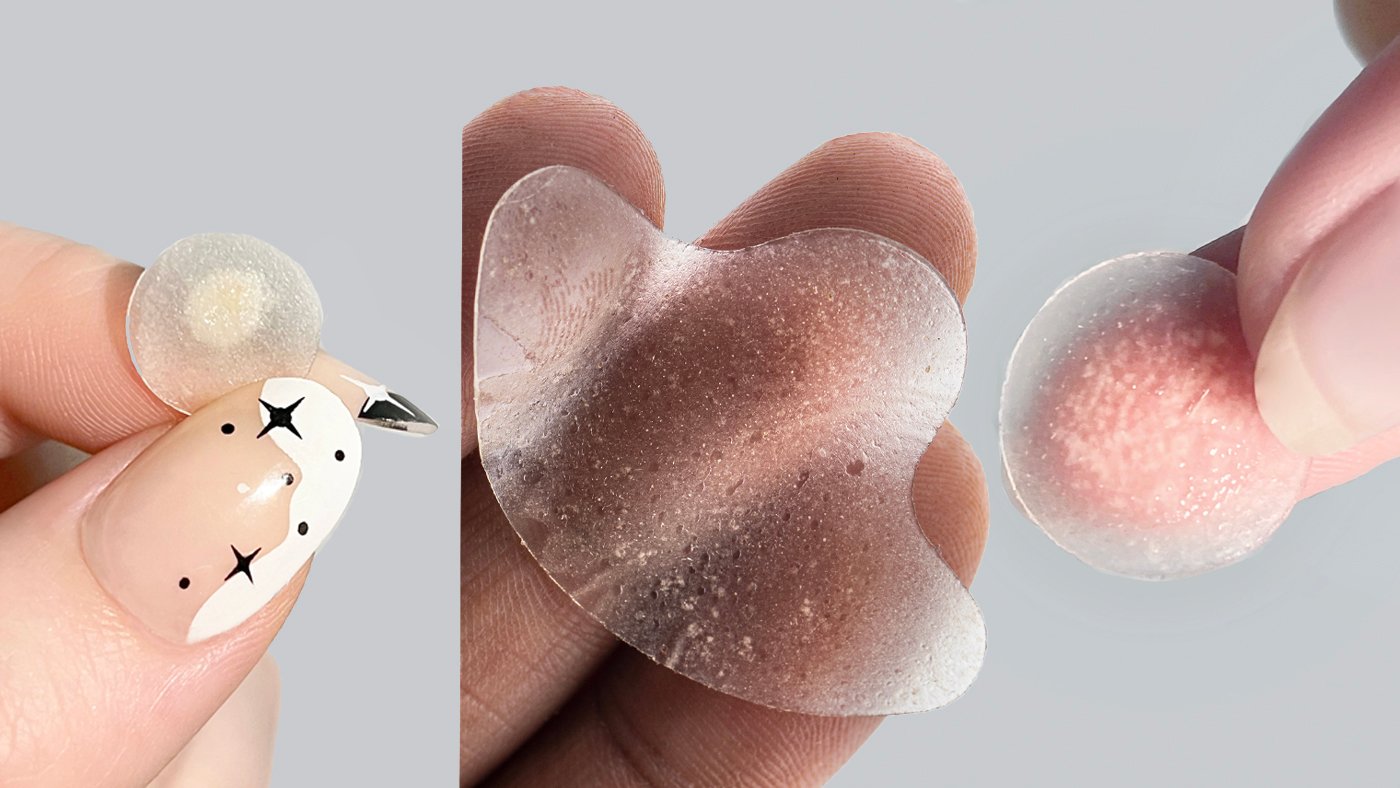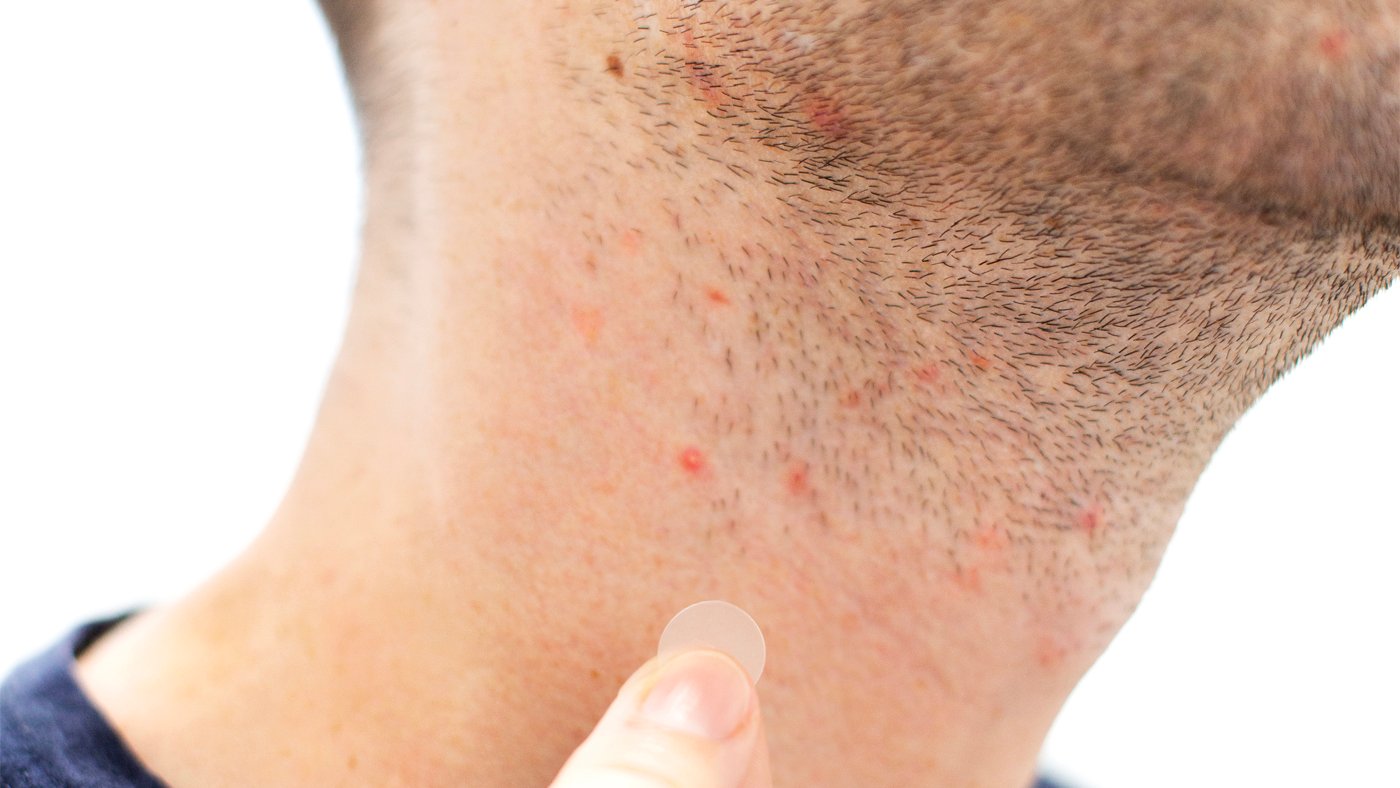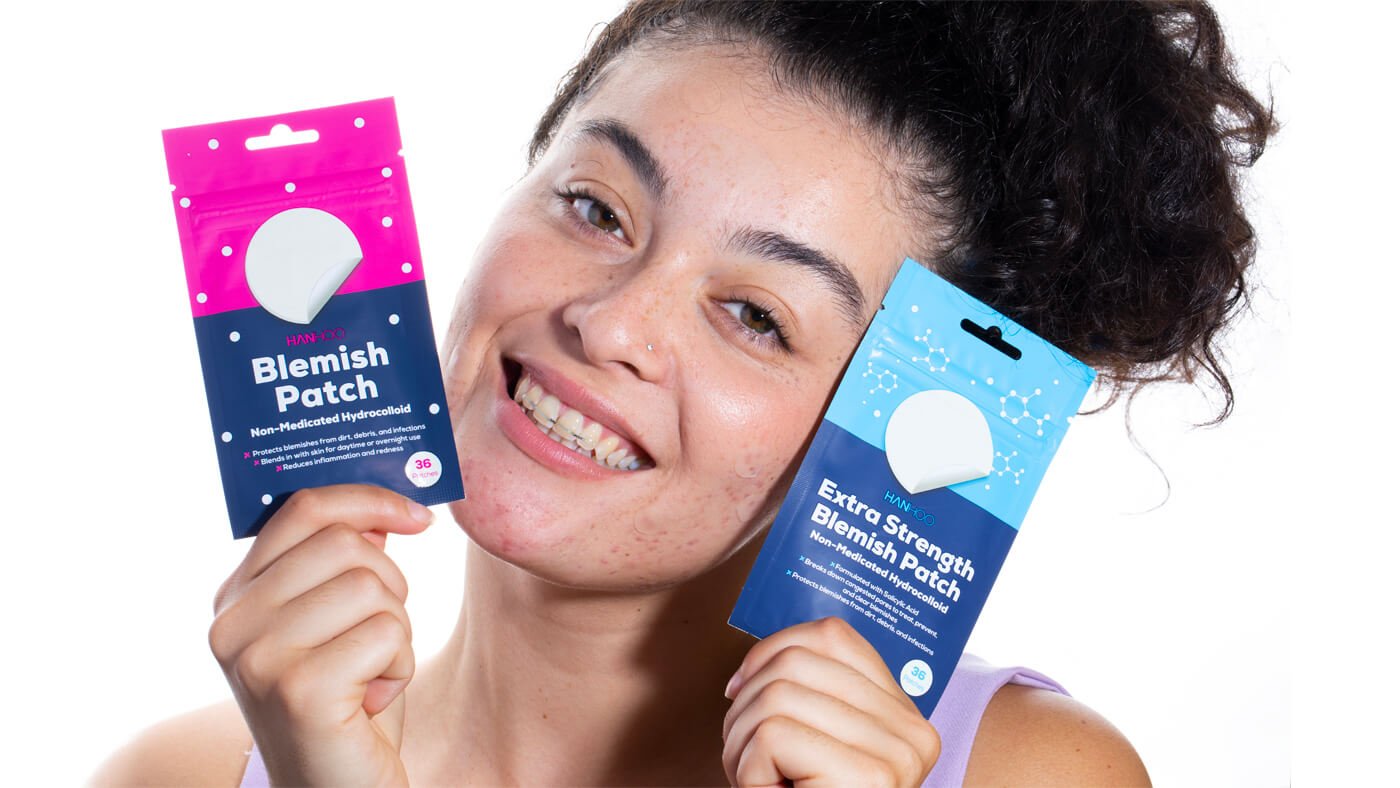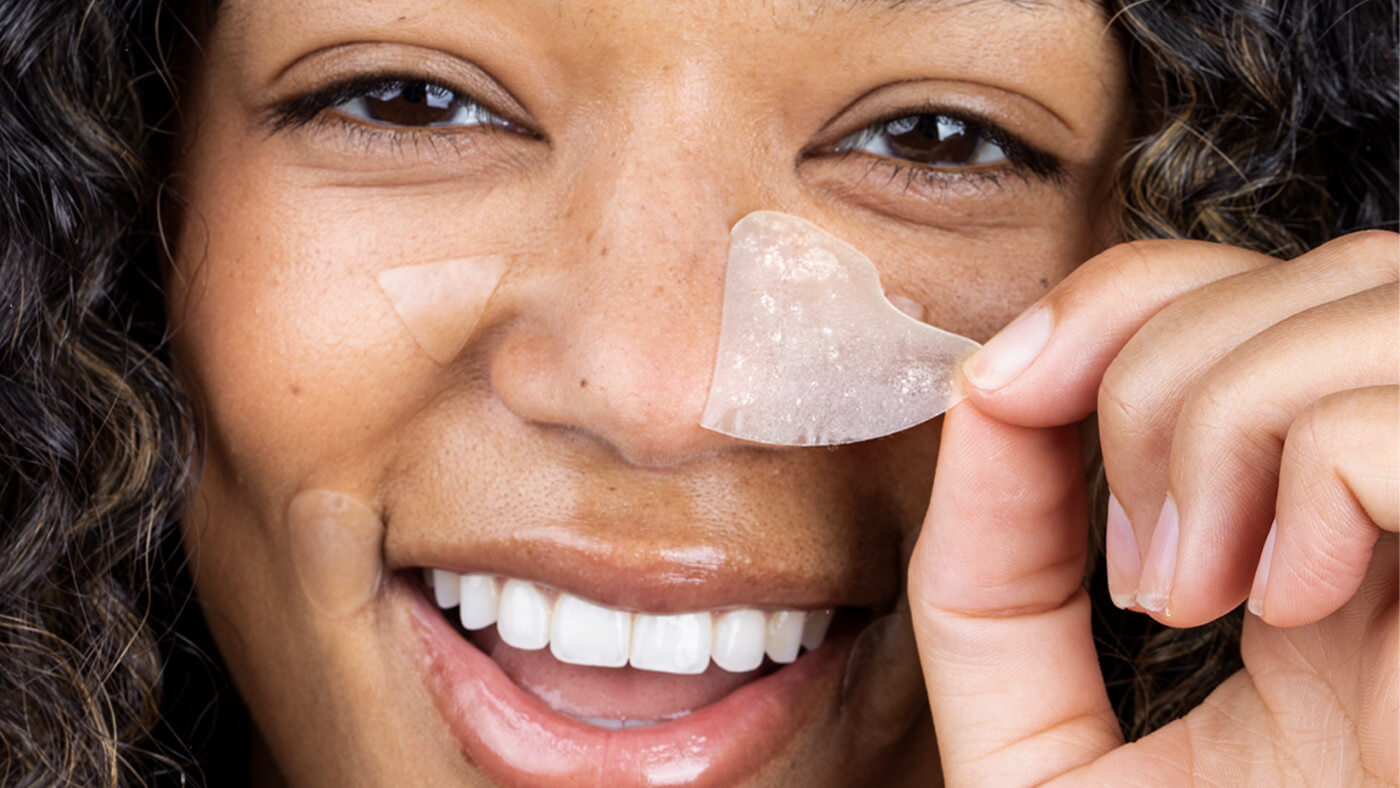So, the 8 hours are up on your pimple patch and you go to peel it off. Then, as you peel the patch off you notice some icky looking gunk on the patch that looks like some sort of white residue.
Not to worry, this just means the patch is working its magic. All that white-ish gunk you see on the patch is the excess sebum and pus from the problem spot. The blemish patch works to shrink the look of pimples by helping to catch all that gunk that’s trapped in the pimple.
Sometimes, especially when it comes to whiteheads, you’ll even see the whole whitehead on the patch. But, if there is still some pus left behind, you can always apply a fresh, new blemish patch to help capture the rest of the gunk from the spot.
How does a blemish patch work?
Blemish patches work by creating a moist environment over the pimple to help support the skin’s natural healing process. And, on top of that it acts as a barrier to help keep out anything that can aggravate a pimple, like dirt, oil, and bacteria.
Made from Hydrocolloid, blemish patches also help absorb excess fluids. Traditionally used in a medical environment, Hydrocolloid has been used for years for wound-healing since it is able to keep a wound safe from external irritants and helps capture any leaking fluids from a wound.
In a blemish patch, Hydrocolloid helps absorb the excess fluids from a pimple including excess sebum and pus. As the blemish patch absorbs fluid it starts to turn white to indicate that the patch is working.
After 6 to 8 hours of use, the patch will typically look like a white spot has formed over where the pimple is, or sometimes a majority of the patch will look white depending on how bad the pimple is. At this point, you can remove the patch and check out all the gunk it has absorbed.
But, sometimes, while the patch may look all gunky, there is still some pus left behind in the pimple.
So, what do you do now?
What do I do if there is no gunk on the blemish patch?
Since not all pimples are the same, the healing time for different types of pimple may be longer. For example, a surface pimple that’s not really inflamed and has all that pimple gunk close to the surface of the skin may only require one blemish patch.
But, when it comes to stubborn blemishes like blind pimples, you may end up needing to apply more than one patch to the spot to get rid of all the gunk in the pimple.
Blind pimples usually appear as slightly inflamed, red bumps. They don’t always have visible gunk near the surface of the spot so it’s important to keep your fingers away from the zit. Trying to pop these types of pimples can push the gunk deeper making the spot look and feel worse and may even cause post-blemish marks once the spot has healed.
In this case, applying the first blemish patch can help the spot from getting worse even if it may not extract the pimple gunk. Then, as the gunk starts to surface, you can apply another patch to help catch all that gunk and reduce the size of the spot.
How can I best use a blemish patch?
If you want to know how to best use your blemish patches follow these steps:
- Cleanse and dry the spot and the surrounding area
- Choose the right patch for your blemish type
- Apply the patch to the pimple and wait 6 to 8 hours
- After the 6 to 8 hours are up, remove the patch
- Discard the patch, and if needed apply a new patch
Remember, if one patch doesn’t do the job, you can apply a new patch right after without worrying about drying out or irritating the spot. Or, if you have some other frequently asked questions about our blemish patches, check out our responses here.





